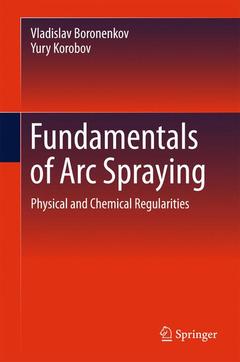Description
Fundamentals of Arc Spraying, 1st ed. 2015
Physical and Chemical Regularities
Authors: Boronenkov Vladislav, Korobov Yury
Language: English
Approximative price 126.59 €
In Print (Delivery period: 15 days).
Add to cartPublication date: 09-2015
Support: Print on demand
Approximative price 108.44 €
In Print (Delivery period: 15 days).
Add to cartPublication date: 11-2016
Support: Print on demand
Description
/li>Contents
/li>Biography
/li>Comment
/li>
Output parameters of coatings.
Professor Yury Korobov has a Doctorate of Technical Sciences. At Uraltransmash he developed the technologies of welding and thermal spraying for defense and civil products. Since 2012, Dr. Korobov has been working as the Head of the Welding Technology Department in the Ural Federal University. He also works on modeling of physics-chemical high temperature processes and studies the properties of the coatings. Dr. Korobov is the author of over 240 publications, including this volume. More than 20 Thermal Spraying bays were organized under his technical supervision. Director of the Ural Welding Institute, Honored Inventor of Russia.
Systematically describes the arc spraying process, illustrating the correlation between input energetic parameters, inner structure features, and operating coating properties
Explains the process features based on physical-chemical regularities
Informs readers on how to predict coating properties and improve equipment using models of feed wire heating, particle oxidation and simulation results
Details characteristic reasons of coatings’ destruction including wear (abrasive, adhesive, fatigue, erosion) and corrosion (chemical, electrochemical) and illustrates behavior of coatings under such effects
Includes supplementary material: sn.pub/extras
These books may interest you

Thermal Spray Coatings 160.25 €



